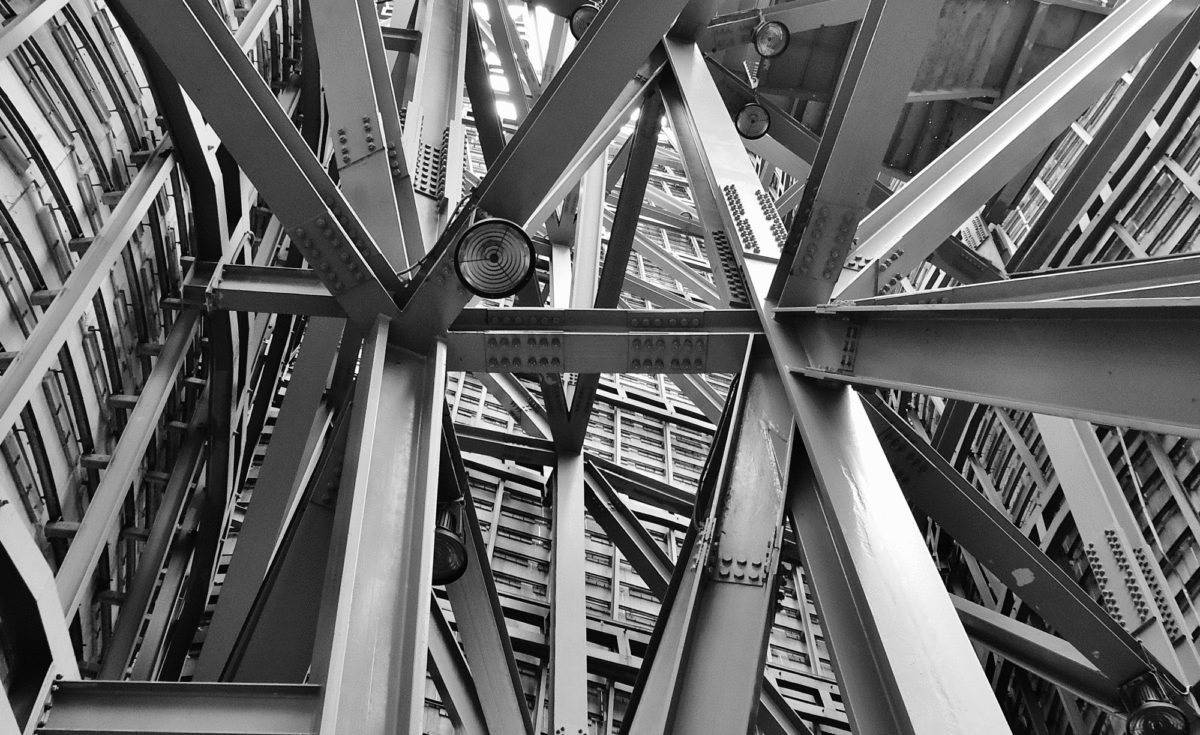While codes and standards are ever-changing in the industry, steel continues to rise to the occasion as a material that can not only meet standards like those of the International Green Construction Code, but also help achieve LEED certification. The standards for steel are updated in the International Code Council’s and National Fire Protection Association’s national model building codes every three years, in coordination with updating the structural provisions of those same building codes. It’s good news for design professionals as the updates generally provide either additional information or greater design flexibility.
Updating codes is no simple process, according to Jonathan Humble, regional director for the American Iron and Steel Institute. “We generally plan for, and start years in advance of, the deadline submission date with the national model codes,” Humble says. “The largest amount of time is the updating of the steel standards themselves, as they must follow a consensus development process that requires openness and reasonable time for public comments and other processes in order for that updating process to take place.” Submitting the updates to the national model codes can be time consuming, as the steel industry must coordinate any code change proposals with the structural engineering community, other trade associations affected by proposed changes, and even industry competitors.
FROM OUR SEPTEMBER+OCTOBER 2017 ISSUE
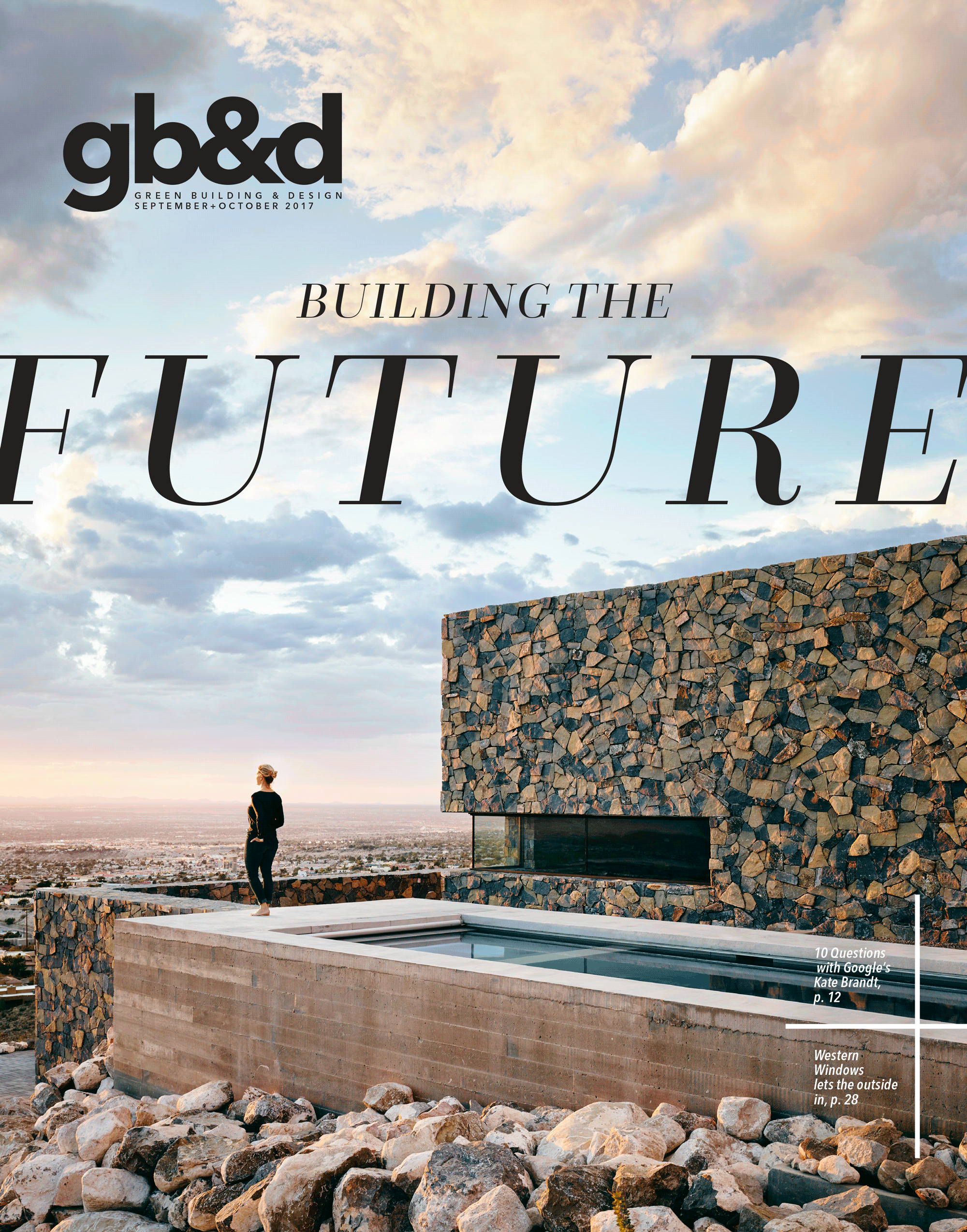
The preferred publication of leading green professionals.
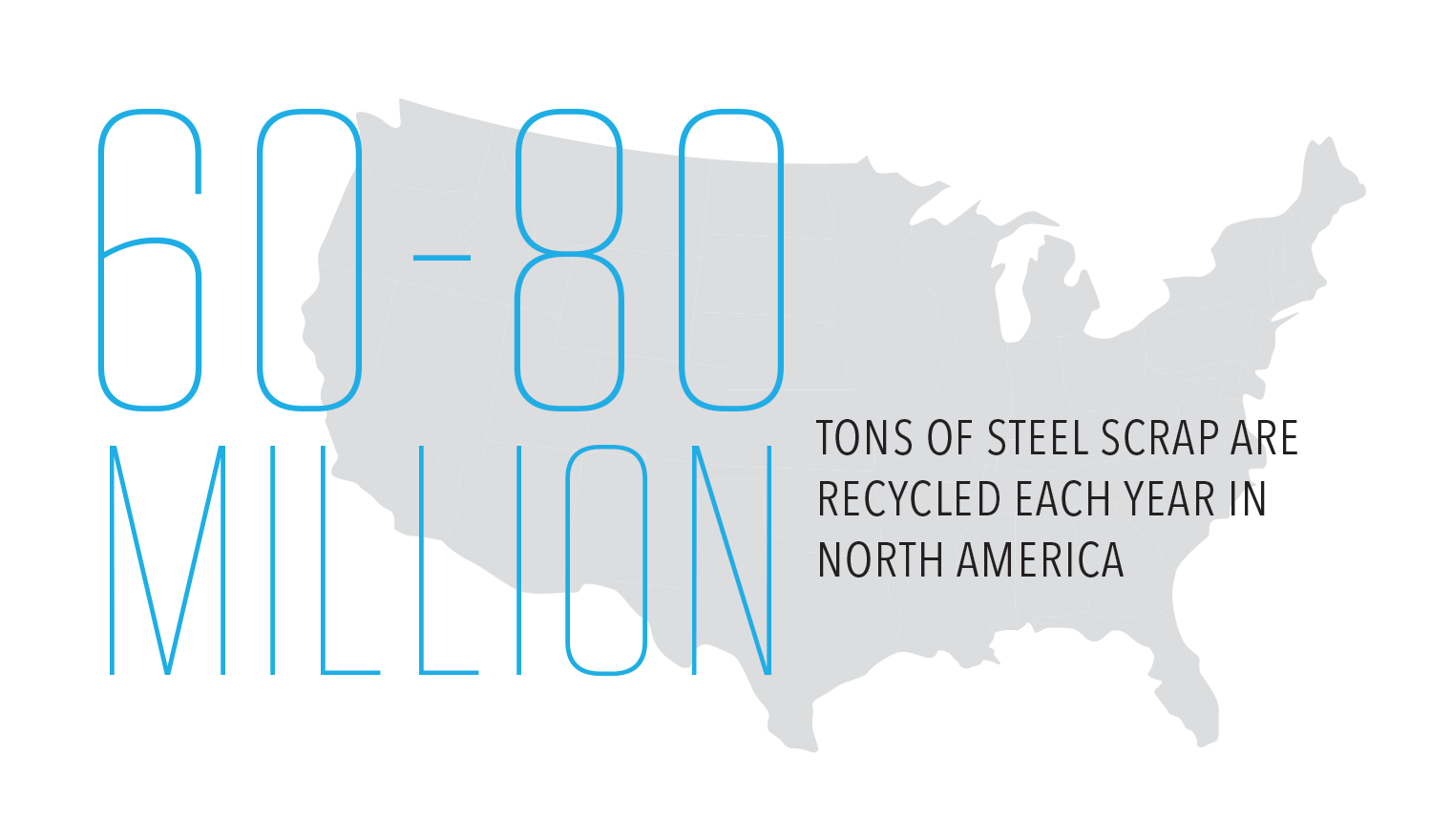
What does it all mean?
Codes
Like the International Green Construction Code, codes are normally adopted by jurisdictions with modifications. The ICC 700 National Green Building Standard’s latest version is 2015. The next edition is expected in 2018.
Standards
Consensus-developed standards are normally referenced by national model codes or adopted by jurisdictions independently. The IGCC and ASHRAE Standard 189.1 will produce a single joint document for 2018 (North America only).
Programs
Like LEED, programs are voluntary and sometimes adopted by ordinance or regulation outside of the adopted building code, such as state-funded schools that are required to achieve LEED silver without actually obtaining the certification.
2018: When the next editions of building codes for International Code Council and the National Fire Protection Association are due.
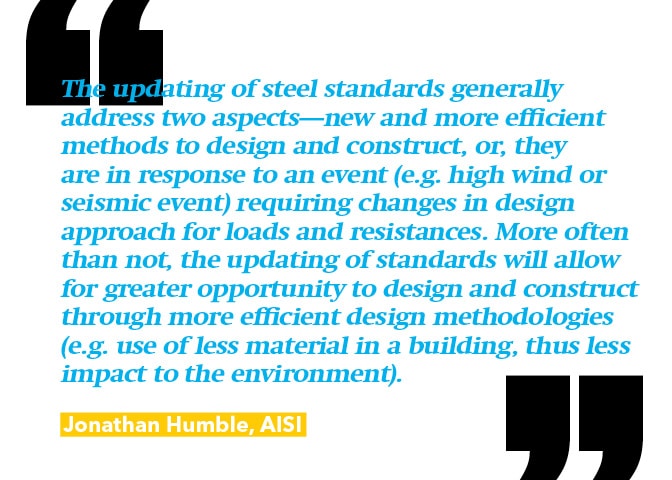
Benefits of Steel
Steel competes well in heat island, materials and resources, and energy provisions.
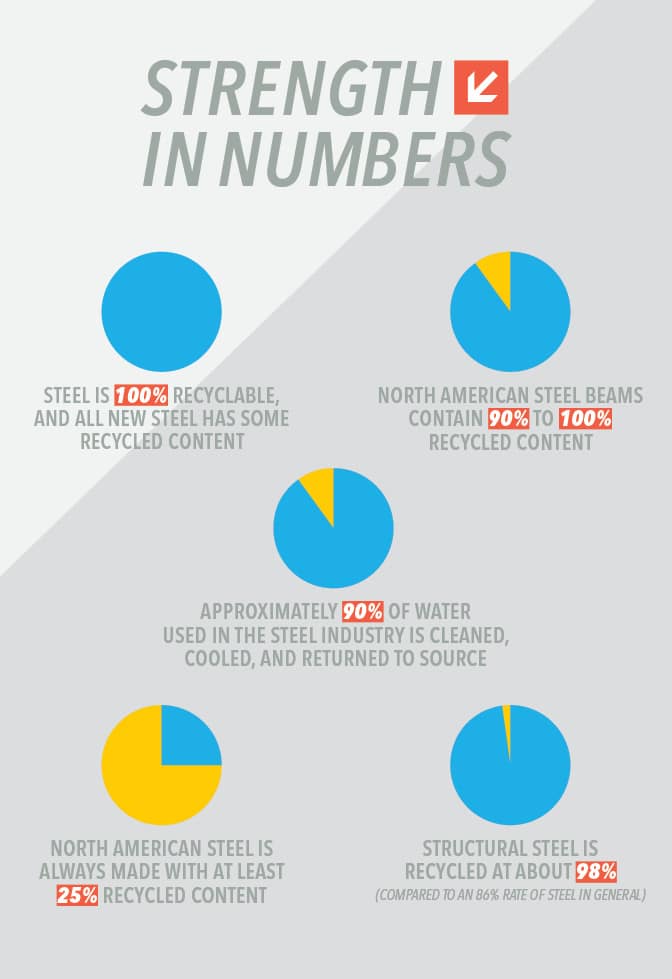
How can steel-intensive design help to meet IGCC codes (2015)?
Chapter 4 Heat Island. Steel roofing products can comply with the solar reflectance and emittance provisions for reflective roofs on buildings and shelters. Sheet steel roofing products can also compete with other building products for roof reflectance.
Chapter 5 Materials and Resources. Steel can contribute to the waste reduction, recycling, environmental product declaration, and life cycle assessment provisions.
Chapter 6 Energy. Cold-formed steel framing can be constructed to be competitive with light wood framing, and metal building systems can be competitive with other low-rise building types when using ASHRAE Standard 90.1, which recognizes metal building systems as a separate building construction type.
Chapter 8 Acoustics. Steel assemblies can contribute to achieving sound transmission requirements for a building’s interior and exterior assemblies.

